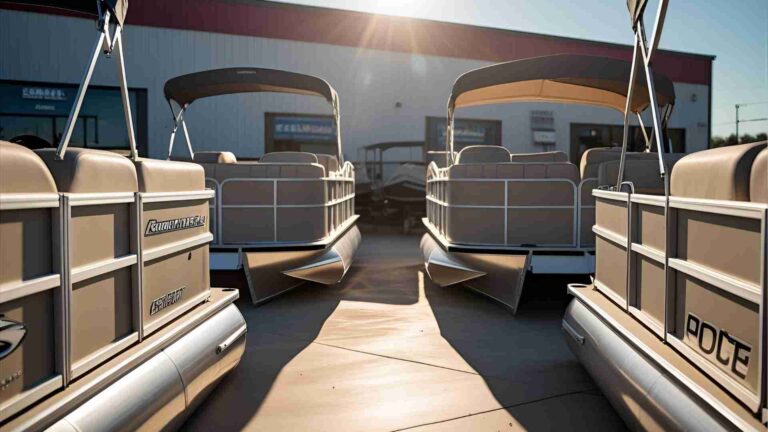Fire Extinguisher Operation & Maintenance: Key Steps
Fire extinguishers are critical tools for combating small fires in homes, businesses, and industrial settings, potentially saving lives and protecting property. However, their effectiveness hinges on proper operation and diligent maintenance. This comprehensive guide delves into the essential steps for operating and maintaining fire extinguishers, ensuring they are ready when needed most. From understanding the types of extinguishers to mastering the PASS technique and adhering to inspection protocols, we’ll cover everything you need to know to enhance fire safety and comply with regulations.
1. Introduction to Fire Extinguishers
Fire extinguishers are portable devices designed to suppress small fires in their early stages, known as incipient fires. They are a first line of defense in emergencies, but they do not replace the need to call emergency services. When a fire breaks out, the immediate priority is to call 911, assess the situation, and only attempt to use an extinguisher if it is safe to do so. Proper operation and maintenance are crucial to ensure these devices function effectively, as a malfunctioning extinguisher can lead to devastating consequences.
This guide provides a detailed roadmap for operating fire extinguishers correctly and maintaining them to meet safety standards, such as those outlined by the National Fire Protection Association (NFPA) and the Occupational Safety and Health Administration (OSHA). Whether you’re a homeowner, business owner, or facility manager, understanding these key steps will empower you to enhance fire safety.
2. Types of Fire Extinguishers and Their Uses
Choosing the right fire extinguisher requires understanding the types of fires it is designed to combat. Fires are classified based on their fuel source, and extinguishers are labeled accordingly.
Classes of Fire
| Class | Fuel Source | Examples |
|---|---|---|
| A | Ordinary combustibles | Wood, paper, cloth |
| B | Flammable liquids | Gasoline, oil, grease |
| C | Electrical equipment | Appliances, wiring |
| D | Combustible metals | Magnesium, titanium |
| K | Cooking oils and fats | Vegetable oil, animal fat |
Common Extinguisher Types
Each extinguisher type uses a specific agent tailored to certain fire classes. Below is a breakdown of the most common types:
| Extinguisher Type | Fire Classes | Agent | Use Case |
|---|---|---|---|
| ABC Dry Chemical | A, B, C | Monoammonium phosphate | General-purpose for homes and offices |
| Carbon Dioxide (CO2) | B, C | Pressurized CO2 | Electrical fires, labs |
| Wet Chemical | K | Potassium acetate | Commercial kitchens |
| Water Mist | A, C | Deionized water | Hospitals, clean rooms |
| Foam | A, B | Aqueous film-forming foam | Fuel storage areas |
| Dry Powder | D | Sodium chloride | Metalworking facilities |
| Clean Agent | B, C | Halotron or FM-200 | Data centers, museums |
Key Consideration: Always check the extinguisher’s label for a UL (Underwriters Laboratories) mark to ensure it meets safety standards. Using the wrong extinguisher can exacerbate a fire, so match the extinguisher to the potential hazards in your environment.
3. How to Operate a Fire Extinguisher: The PASS Technique
Operating a fire extinguisher correctly can make the difference between containing a small fire and allowing it to spread. The universally recognized method is the PASS technique.
Step-by-Step Guide
- Pull the pin: This unlocks the operating lever. Point the nozzle away from you to avoid accidental discharge.
- Aim low: Direct the nozzle or hose at the base of the fire, where the fuel source is burning.
- Squeeze the lever: Apply steady pressure to release the extinguishing agent.
- Sweep side to side: Move the nozzle across the base of the fire until it is fully extinguished.
Duration: Most portable extinguishers have about 10 seconds of discharge time, so use it efficiently. After extinguishing the fire, monitor the area for a few minutes to ensure it doesn’t reignite.
Safety Precautions
- Assess the Situation: Only attempt to fight a fire if it is small, contained, and you have a clear escape route.
- Stay Low: Avoid inhaling smoke, which can be toxic.
- Evacuate if Necessary: If the fire grows or smoke becomes hazardous, leave immediately and call 911.
- Training: Many fire departments offer free training sessions. Familiarize yourself and others in your household or workplace with the PASS technique.
4. Fire Extinguisher Maintenance: Ensuring Reliability
A fire extinguisher is only as effective as its maintenance. Regular inspections and servicing ensure it will work when needed. The NFPA 10 Standard for Portable Fire Extinguishers provides detailed guidelines, which we’ve distilled into actionable steps.
Monthly Inspections
Monthly visual checks can be performed by anyone with basic knowledge. Use this checklist:
| Inspection Point | What to Check |
|---|---|
| Accessibility | Ensure the extinguisher is not blocked by objects. |
| Pressure Gauge | Verify the needle is in the green zone. |
| Physical Condition | Look for dents, rust, leaks, or corrosion. |
| Nozzle/Hose | Check for obstructions or damage. |
| Pin and Tamper Seal | Confirm they are intact. |
| Label | Ensure instructions are legible and facing outward. |
Tip: For dry chemical extinguishers, turn the unit upside down or tap it with a rubber mallet monthly to prevent the powder from settling.
Annual Servicing
Annual maintenance must be conducted by a certified professional. This involves:
- A thorough external and internal examination.
- Checking mechanical components (valve, hose, nozzle).
- Recharging if the extinguisher has been used or shows low pressure.
- Attaching a service tag with the date, technician’s name, and agency.
Hydrostatic Testing
Hydrostatic testing checks the integrity of the extinguisher’s cylinder under pressure. Frequency depends on the extinguisher type:
| Extinguisher Type | Hydrostatic Test Interval |
|---|---|
| Stored Pressure (Dry Chemical) | Every 12 years |
| CO2 | Every 5 years |
| Water-Based | Every 5 years |
| Cartridge-Operated | Every 12 years |
If the cylinder fails the test, it must be replaced.
Recordkeeping
Maintain records of all inspections and servicing for at least 12 months. Tags or labels on the extinguisher should include:
- Month and year of inspection/servicing.
- Name of the person or agency performing the work.
- For internal examinations, a verification-of-service collar is required.
Pro Tip: Digital recordkeeping systems can streamline compliance and provide easy access to maintenance histories.
5. Selecting and Installing Fire Extinguishers
Choosing and placing fire extinguishers correctly is as important as maintaining them.
Choosing the Right Extinguisher
- Assess Risks: Identify potential fire hazards in your environment (e.g., kitchen, garage, office).
- Match Classes: Select extinguishers rated for the fire classes you’re likely to encounter. ABC dry chemical extinguishers are versatile for most settings.
- Size Matters: Larger extinguishers (e.g., 10 lbs) are suitable for commercial spaces, while smaller units (2.5–5 lbs) are ideal for homes.
- Certifications: Ensure the extinguisher has a UL or equivalent certification.
Proper Placement and Storage
- Accessibility: Mount extinguishers 3.5–5 feet from the floor, in clear view, and near exits.
- Signage: Install signs above extinguishers for easy identification.
- Protection: In harsh environments, use covers to shield extinguishers from dust or chemicals.
- Temperature: Store extinguishers in temperatures between -40°F and 120°F to prevent valve or hose damage.
OSHA Guidelines: For workplaces, ensure extinguishers are spaced according to the maximum travel distance (e.g., 75 feet for Class A, 50 feet for Class B).
6. Fire Extinguisher Specifications and Costs
Below is a comparison of popular fire extinguisher models, their specifications, and approximate costs.
| Model | Type | Capacity | Fire Classes | Range | Price (USD) |
|---|---|---|---|---|---|
| Kidde Pro 210 | ABC Dry Chemical | 4 lbs | A, B, C | 10–15 ft | $40–$60 |
| Amerex B500 | ABC Dry Chemical | 5 lbs | A, B, C | 12–18 ft | $50–$80 |
| Kidde FA110 | ABC Dry Chemical | 2.5 lbs | A, B, C | 8–12 ft | $25–$40 |
| Ansul Sentry | CO2 | 5 lbs | B, C | 3–8 ft | $100–$150 |
| Buckeye 13315 | Wet Chemical | 6 liters | K | 8–12 ft | $150–$200 |
Cost Factors:
- Size: Larger extinguishers cost more but offer longer discharge times.
- Type: Specialized extinguishers (e.g., Class K, CO2) are pricier.
- Maintenance: Annual servicing costs $20–$50 per unit, while hydrostatic testing ranges from $30–$100.
Self-Service Extinguishers: Models like the P50 require only visual inspections, reducing maintenance costs over their 20-year lifespan. Prices start at $100–$150.
7. User Reviews and Real-World Insights
Top-Rated Fire Extinguishers
| Brand | Type | Price | Rating |
|---|---|---|---|
| Kidde FA110 | ABC Dry Chemical | $35 | ★★★★☆ |
| Amerex B402 | ABC Dry Chemical | $50 | ★★★★★ |
| First Alert FE3A40 | ABC Dry Chemical | $30 | ★★★★☆ |
To provide a balanced perspective, we’ve compiled feedback from users across residential and commercial settings:
- John M., Homeowner: “I bought a Kidde Pro 210 for my garage. It’s lightweight and easy to use. I check the gauge monthly, and it’s been reliable so far.”
- Sarah K., Restaurant Manager: “We invested in Buckeye Class K extinguishers for our kitchen. The annual servicing is a bit costly, but it’s worth it for compliance and safety.”
- Mike R., Office Manager: “Our Amerex ABC extinguishers are mounted in every hallway. Staff training on PASS was a game-changer. One unit failed a pressure check, but our service company caught it early.”
- Lisa T., Small Business Owner: “I switched to P50 self-service extinguishers to save on maintenance. The upfront cost was higher, but I’m saving hundreds annually.”
Common Challenges:
- Users often forget monthly inspections, leading to settled powder or unnoticed damage.
- Some find professional servicing costs unexpected, emphasizing the need for clear budgeting.
8. Fire Safety Best Practices
Beyond extinguishers, adopt these habits to enhance fire safety:
- Conduct Drills: Regular fire drills ensure everyone knows evacuation routes and extinguisher locations.
- Train Staff: In workplaces, provide annual training on extinguisher use and fire response.
- Install Alarms: Smoke and carbon monoxide detectors complement extinguishers.
- Clear Hazards: Remove clutter and store flammable materials safely.
- Know Your Exits: Always prioritize escape over fighting a fire.
9. Conclusion
Fire extinguishers are indispensable tools for fire safety, but their reliability depends on proper operation and maintenance. By mastering the PASS technique, selecting the right extinguisher, and adhering to a rigorous maintenance schedule, you can ensure these devices are ready to perform in an emergency. Regular inspections, professional servicing, and compliance with NFPA and OSHA standards are non-negotiable for protecting lives and property.
Invest in quality extinguishers, train your household or team, and stay vigilant with maintenance. Fire safety is a shared responsibility, and these key steps empower you to create a safer environment for everyone.
Happy Boating!
Share Safe Boating: Fire Extinguisher Maintenance Guide with your friends and leave a comment below with your thoughts.
Read Wakeboard Trick: Kicker Perspective – Everything to Know until we meet in the next article.






